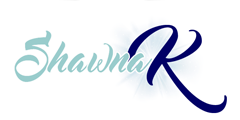If you’re lifting iron – you need to be consuming iron! And if you’re not lifting iron (and why aren’t you?), you need to be consuming iron too!
And no, I’m not suggesting you start gnawing on your dumbells! 1 out of EVERY 12 women is believed to be suffering from iron deficiency. And amongst the vegetarian community that statistic goes up to 25%!
Iron is used by the body to
1. Transport oxygen (haemoglobin).
2. Converting food into energy.
3. Assist normal function of the immune and central nervous systems.
If you are constantly tired, feeling lethargic or run-down and become breathless with physical activity you may be in need of an iron boost in your diet. Toddlers, women of child-bearing age and athletes are at greatest risk.
Anaemia is a condition where iron deficiency is at it’s most severe – a condition that requires iron and other supplements and up to a year for recovery. Symptoms of iron deficiency anaemia include weakness, headaches and heart palpitations.
And forgive me if I sound like a broken record – but guess what’s key in managing iron deficiency or anaemia? Yep, that would be diet!
For women, low intakes of red meat in conjunction with blood loss from menstruation are common underlying causes. Low iron levels can mask coeliac disease, gastrointestinal bleeding and colorectal cancer. For this reason low iron levels should always be investigated by a medical professional. Excessive iron intake can also be dangerous. Hence iron should never be supplemented without a doctor’s advice. A simple blood test can test for low iron levels but before you get to that point, check that your diet focuses on iron rich foods.
There are two main sources of iron that can be gained from food. “Haem” and “non-haeme” iron. (both are references back to haemoglobin – the protein that transports oxygen through the blood).
A number of plant foods including legumes such as chickpeas and lentils, green vegetables contain iron. Unfortunately, the type of iron found in plant foods, non-haem iron, is not particularly well absorbed. This is in contrast to the haem iron found in lean red meat in which 20 per cent of the iron present is absorbed, compared with just 5 per cent of non-haem iron. For this reason, many adults and young children will require lean red meat at least every second day to get all the iron they require. For vegetarians, eating iron enriched foods each day is important for ensuring the body has access to all of the iron it needs to function optimally.
Iron absorption can also be increased by combining iron rich foods with Vitamin C rich foods such as citrus fruit, tomatoes and other red and yellow fruits and vegetables. For example, combining lean meat with bright vegetables such as red capsicum or iron fortified cereal with orange juice can increase the amount of iron the body absorbs at a given meal.
Bear in mind that in the same way that adding Vitamin C can enable absorption – adding foods high in caffeine can deplete iron absorption.
Women generally need twice as much iron in their diets as men. So forget the myth of “white meat for the ladies, red meat for the gentlemen!” Elbow hubby out of the way and reach for the steak! The good news is if you are low in iron your body will absorb more – as long as you give it the opportunity with iron-rich foods.
Women between the ages of 30-50 require 18mg of iron in their daily diet. Over the age of 50 that requirement goes down to 8mg. Obviously you should discuss this with your doctor if you are suffering severe menopausal bleeding as this will deplete iron stores further. A lack of vitamin B12 can also add to the equation of iron depletion though this tends to appear as an issue in a strict vegan diet.
If you’re experiencing some of the symptoms described above and believe your diet has been less than stellar in the iron rich foods department then it’s time to take hard look at your diet.
Here are a list of some foods that are iron rich (some such as bread are iron-fortified – added, not naturally occurring)
| Iron in food | mg iron |
| 200g beef steak | 7 |
| 1 cup beef mince | 5 |
| 1 chicken breast fillet | 2 |
| 1 fish fillet | 1 |
| 1/2 cup baked beans | 2.2 |
| 2 slices grain bread | 2 |
| Breakfast cereal with iron | 3 |
| 1/2 cup Spinach | 0.6 |
In general, you can eat a healthy diet that includes good sources of iron. A healthful diet includes fruits, vegetables, whole grains, low fat milk and milk products, lean meats, fish, dry beans, eggs, nuts, includes healthy fats and minimises cholesterol, salt, and added sugars.
So what’s the wash up? A diet of whole, unprocessed foods containing a wide variety of protein rich foods with a veggie colour palate of the rainbow is more likely to give you a balanced nutritional intake and reduces the risk of low iron. Who’d have thought????
If you need help with your nutrition and eating for wellness, you can’t go past these people! Paleo Hacks show you how to eat paleo-style and make it easy. Trust me, your skin will glow, your energy will sky-rocket, and you’ll feel fantastic. You know you need to reduce processed foods from your diet so Paleo Hacks make it easy for you with done for you meal planning (just see the pics below – I LOVE these!), recipes, nutrition advice and some yummy desserts in there to make it all easy and sustainable.





